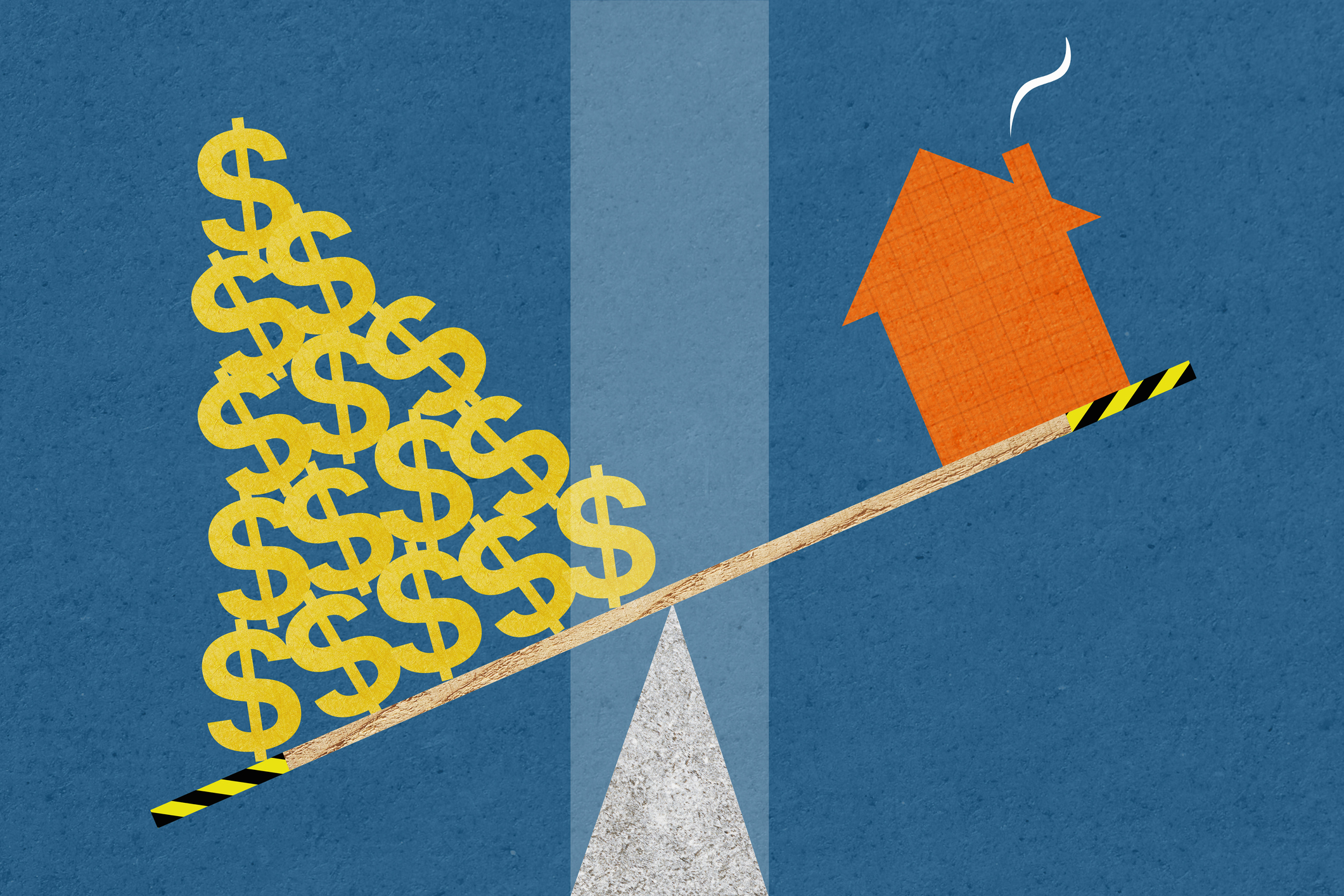Tax Breaks for Energy-Efficient Home Improvements
You might qualify for a tax credit if you install an eligible central air-conditioning system this year.

Can I get a tax credit for installing a new central air conditioner?
Maybe. Last year’s stimulus law expanded the tax credits for energy-efficient home improvements and extended the credit for 2009 and 2010. If you install an eligible central air-conditioning system in your principal residence before December 31, 2010, you could qualify for a tax credit worth 30% of the cost of the air-conditioning system and installation, up to a $1,500 maximum. Because it is a tax credit, it lowers your tax bill dollar for dollar.
Only certain central air-conditioning systems qualify for the credit, based on their energy efficiency. Many manufacturers provide a Manufacturer Certification Statement on their Web sites, certifying that the product qualifies for the tax credit. Your HVAC contractor may also be able to provide you with a copy. In some cases, you may need to replace both the heating and air-conditioning systems to get the credit. See the detailed explanation in the Federal Tax Credits for Consumer Energy Efficiency page at the government’s EnergyStar.gov Web site (the central air-conditioning requirements and FAQs are particularly helpful). Window-unit air conditioners are not eligible for the tax credit.

Sign up for Kiplinger’s Free E-Newsletters
Profit and prosper with the best of expert advice on investing, taxes, retirement, personal finance and more - straight to your e-mail.
Profit and prosper with the best of expert advice - straight to your e-mail.
To claim the credit, file Form 5695 with your 2010 tax return in the spring (the 2010 version of the form is not available yet, but here is a link to the 2009 form, as well as instructions and general information). You do not need to submit the Manufacturer Certification Statement of Eligibility with your tax return, but you should keep a copy with your records. The $1,500 maximum for the tax credit applies to 2009 and 2010 combined -- so if you took a credit for energy-efficient home improvements last year, you used up part of your allowance. A $1,000 credit claimed on your 2009 return, for example, means that your 2010 credit can’t exceed $500.
For more information about the tax breaks for energy-efficient home improvements, see Going Green Pays Off. For more information, see Energystar.gov.
Get Kiplinger Today newsletter — free
Profit and prosper with the best of Kiplinger's advice on investing, taxes, retirement, personal finance and much more. Delivered daily. Enter your email in the box and click Sign Me Up.

As the "Ask Kim" columnist for Kiplinger's Personal Finance, Lankford receives hundreds of personal finance questions from readers every month. She is the author of Rescue Your Financial Life (McGraw-Hill, 2003), The Insurance Maze: How You Can Save Money on Insurance -- and Still Get the Coverage You Need (Kaplan, 2006), Kiplinger's Ask Kim for Money Smart Solutions (Kaplan, 2007) and The Kiplinger/BBB Personal Finance Guide for Military Families. She is frequently featured as a financial expert on television and radio, including NBC's Today Show, CNN, CNBC and National Public Radio.
-
 6 Stunning Waterfront Homes for Sale Around the US
6 Stunning Waterfront Homes for Sale Around the USFrom private peninsulas to lakes, bayous and beyond, Kiplinger's "Listed" series brings you another selection of dream homes for sale on the waterfront.
By Charlotte Gorbold Published
-
 Six Reasons to Disinherit Someone and How to Do It
Six Reasons to Disinherit Someone and How to Do ItWhether you're navigating a second marriage, dealing with an estranged relative or leaving your assets to charity, there are reasons to disinherit someone. Here's how.
By Donna LeValley Published
-
 Did Florida’s Chance at $1,000 in Property Tax Rebates Vanish?
Did Florida’s Chance at $1,000 in Property Tax Rebates Vanish?State Taxes The Florida Legislature bypassed Gov. Ron DeSantis’ wish to cut property taxes and instead voted to lower the state’s sales tax.
By Gabriella Cruz-Martínez Published
-
 How Caregivers for Adults Can Save on Taxes in 2025
How Caregivers for Adults Can Save on Taxes in 2025Tax Breaks Caring for your parent or spouse can be stressful, but the IRS offers tax breaks for qualifying taxpayers. Here they are.
By Kate Schubel Published
-
 New South Carolina Income Tax Cut Might Eat Your Cash
New South Carolina Income Tax Cut Might Eat Your CashState Taxes South Carolina’s flat income tax bill could have the majority of residents paying higher income taxes. Find out how.
By Kate Schubel Published
-
 Tax-Deductible Home Improvements for Retirement in 2025
Tax-Deductible Home Improvements for Retirement in 2025Retirement Taxes Your aging-in-place plan could benefit from the medical expense tax deduction. But watch out for capital gains and property taxes.
By Kate Schubel Published
-
 New Colorado Tax Credit: What’s the Scoop?
New Colorado Tax Credit: What’s the Scoop?State Tax Everything you need to know about the Colorado family affordability tax credit in 2025.
By Kate Schubel Published
-
 Key Family Tax Breaks Are on the GOP Chopping Block This Year
Key Family Tax Breaks Are on the GOP Chopping Block This YearTax Credits Several tax breaks, including the Child Tax Credit, may face reforms or be cut entirely as lawmakers seek revenue for Trump’s tax plans.
By Gabriella Cruz-Martínez Last updated
-
 What's Going on With New Jersey Property Tax Programs?
What's Going on With New Jersey Property Tax Programs?Property Tax ANCHOR and ‘Senior Freeze’ just got a refresh, and there’s a new program: Stay NJ. Learn how to save on New Jersey property taxes.
By Kate Schubel Published
-
 Five States With the Largest EITC Checks
Five States With the Largest EITC ChecksEITC Households in these states received a larger Earned Income Tax Credit (EITC) last year.
By Gabriella Cruz-Martínez Published